GM’s Chevrolet division was once the American family car division.
Baseball, hot dogs apple pie and Chevrolet.
Remember that?
Today, it sells just one car – other than the Camaro and Corvette, neither of which is a family car.
That car is the Malibu, which is now the sole alternative to the new family car – the crossover SUV – which has almost replaced the sedan as the car of choice for most families, chiefly because crossovers offer more room for the money as well as features many sedans (including the Malibu) do not offer, such as all-wheel-drive.
But if you’re not interested in another crossover SUV for your next family car, the Malibu could be of interest.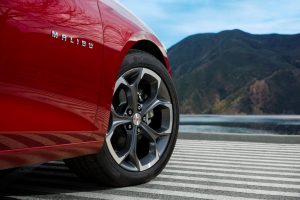
What It Is
The Malibu is a medium-sized family sedan that competes with a dwindling number of rivals, including the Toyota Camry and Honda Accord.
Prices begin at $23,400 for the base LS trim, which comes with one of the smallest four cylinder engines on the market – just 1.5 liters- paired with a CVT automatic and front-wheel-drive.
The next-up RS ($24,400) and LT ($26,800) trims have the same drivetrain but more amenities, including (RS) sportier “blackout” grille and dual exhaust tips and (LT) heated sears and automatic climate control.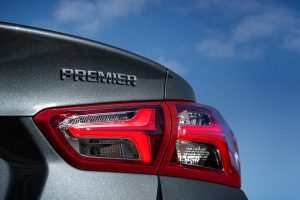
The top-of-the-line Premier trim ($33,500) upgrades the engine to a larger 2.0 liter turbo’d four that’s paired with a conventional (geared, rather than CVT) nine-speed automatic.
This trim also comes standard with a heated steering wheel.LED headlights, dual-pane sunroof and ambient interior lighting.
What’s New
Something less – and something more.
While the Malibu soldiers on, there is one less Malibu trim for 2022 – and a higher base price. Last year’s $22,140 to start L trim has been discontinued – which amounts to a $1,260 uptick in the effective base price of a 2022 Malibu.
Which takes away from what had been one of the Malibu’s strongest selling points relative to rivals like the Camry and Accord, both of which had much higher starting prices ($25,045 for the ’21 Camry and $24,470 for the ’21 Accord).
The ’22 Malibu’s base price – now higher by $1,260 – is much closer to the base prices of the ’22 Camry and Accord – whose prices remain about what they were for 2021 (they are now $25,295 and $25,470 respectively).
What’s Good
Trims with the 1.5 liter engine approach 40 MPG on the highway, considerably higher mileage than most crossovers – which use more gas because their shapes are less efficient.
Good sized trunk (nearly 16 cubic feet) for a car.
A family car for the family that doesn’t want a crossover.
What’s Not So Good
Rivals like Camry and Accord come standard with more engine – for not much more money.
Malibu’s stronger 2.0 liter engine is limited to the much-more-pricey Premier trim.
It’s probably the last family car Chevy will ever make.
Every Malibu except the Premier trim comes standard with a 1.5 liter, turbocharged four cylinder engine that makes 160 horsepower. It’s paired up with a continuously variable (CVT) automatic and front-wheel-drive.
The chief virtue of this engine is efficiency.
EPA rates it as being capable of delivering 29 miles-per-gallon in city driving and 36 miles-per-gallon on the highway. These are better numbers than crossovers like the Chevy Equinox – which uses the same basic engine – deliver. The Equinox only manages 31 on the highway and 26 in city driving.
The difference in mileage being largely a function of the crossover’s less aerodynamically efficient shape, being much taller and boxier than a car like the Malibu.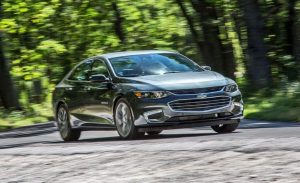
Unfortunately for the Malibu, there are other cars in this class that get better mileage – with more engine.
These include the Camry, which comes standard with a 2.5 liter four (no turbo) that produces 203 horsepower – the most standard horsepower in the class – and still manages to rate 28 city and 39 on the highway.
There’s also the Honda Accord – which comes standard with a 1.5 liter engine that’s the same size as the Malibu’s standard engine – but summons 192 horsepower while also delivering 30 MPG in city driving and 38 on the highway.
Both of these two Malibu rivals are also noticeably quicker, each of them being able to get to 60 in the low-mid seven second range while the 1.5-powered Malibu needs closer to eight seconds to reach that mark.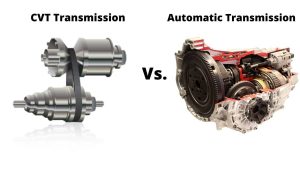
This can be addressed by opting for the Premier trim, which ditches the 1.5 liter engine in favor of a larger and much stronger 2.0 liter turbocharged four cylinder engine.
It makes 250 horsepower, enough to drop the 0-60 time down to about 5.8 seconds.
Unfortunately, this engine is only available with the Premier trim – which costs $10k more to start than the base LS trim.
Honda offers the Accord’s optional 2.0 liter, 252 horsepower engine in two trims, including the $27,930 Sport trim – which stickers for $5,570 less to start than the Malibu Premium.
You could also get a V6-powered Toyota Camry (and 301 horsepower, the most in the class) for $32,360 – which is still $1,140 less than Chevy wants for the Malibu Premier (with 41 fewer horses).
One upside is that that Malibu Premier also comes with a conventional automatic transmission – with gears that shift rather than ranges that vary.
CVT automatics are common – in almost everything – because they help boost city/highway mileage numbers by about 3-4 MPG vs. the same car with a conventional automatic. Which they do by keeping the engine in exactly the right range for a given road speed, as opposed to gears – which are each close to being the right gear for a given road speed and which also have to be changed (up or down) as road speed varies, with a shift in between each change. The CVT can vary ranges faster – and more smoothly, too -since there are no gears to shift (and engage/disengage).
But CVTs have operating characteristics some people dislike.
Instead of the conventional automatic’s shifting, there is surging – the engine revs and the transmission sometimes feels as though it’s slipping because it doesn’t shift, ever.
The revs build – and hold.
They only dial back as you back off the throttle. If the car’s engine hasn’t got a lot of power to spare – forcing you to keep the throttle down to get the car to move – there is sometimes a lot of drivetrain noise, the result of the engine being held at high RPM by the CVT, to keep the forward progress going.
If you’d like to avoid that – and would like more power to go along with that – the Premier trim with the 2.0 engine and nine-speed automatic is the ticket.
Provided you can afford it.
All Malibus are front-wheel-drive only, regardless of engine.
The same is true of the Accord but you can get AWD with the Camry – though not with the Camry’s available V6.
One of the reasons, probably, for the waning interest in cars – generally – in favor of crossovers is that most cars (there are a few exception) are boring to drive.
They are the victims of their own competence.
Nothing much ever goes wrong. But nothing much fun ever happens, either.
Malibus and Impalas made back in the ’60s and ’70s may have burned oil before they reached 50,000 miles and rusted out even before that – but they had V8s (most of them) and were rear-wheel-drive and had vinyl-covered three-across bench seats you could slide across in the curves and wheel covers that popped off if you took the curves too fast. They had huge trunks for hauling kegs of beer and roomy back seats for making out. Mom got groceries during the week; you took your date to the movies on weekends.
Many memories were made in those Malibus and Impalas.
This Malibu is forgettable.
It’s not a bad car in any specific way. In many quantifiable ways it is a much better car than those old blue-smoke-spewing (and gas guzzling) family dreadnoughts many of us remember, with fondness.
But there is something inquantifiably missing from most modern cars – and it’s not just the roominess in the back and trunk.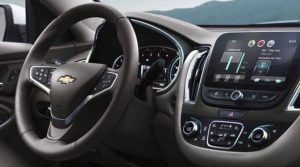
There’s nothing there to get emotionally attached to. These things are appliances – and while appliances have their place (and merits) the problem, when it comes to selling cars, is that other appliances – crossovers – have more merit, in terms of such things as room and space.
Without the harder-to-quantify things that made the old Malibus and Impalas charming, the new Malibu is just another car.
The Malibu is an attractively bland-looking car. Nothing about it calls attention to it – and that’s why it’s probably not long for this world.
Well, one of the reasons why . . . .
At 194.2 inches long, the Malibu is slightly longer than rivals like the Accord (192.1 inches) and the Camry (same 192.1 inches) which makes all of them mid-sized cars.
And they all have the same problem.
A compact-sized crossover like the Equinox mentioned earlier – which is only 183.1 inches long – has nearly 30 cubic feet (29.9 to be precise) of space for cargo behind its second row and that expands to a capacious 63.9 cubic feet when you fold the Equinox’s second row flat – vs. 15.7 cubic feet (and that’s it) in the trunk of a sedan like the Malibu. The Camry’s got less – 15.1 cubic feet – and the Accord only slightly more (16.7 cubic feet).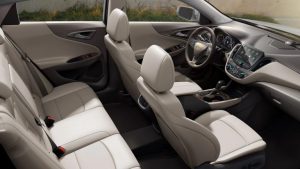
Having about twice the space for a family’s stuff – without even folding the back seats down – makes a crossover like the Equinox vastly more practical, as an appliance, than a car like the Malibu and its fellows.
Back in the day – when the Malibu and others of its type were full-size cars (comparable in today’s terms to cars like the Mercedes S-Class and BMW 7 and even longer and roomier at their height than those cars are today) they were immensely practical cars, with room for six three across in both rows and plenty of space for all their stuff in their huge trunks.
But not anymore.
This Malibu is decently roomy for its size; the problem is it’s less roomy than most family car buyers need. Which is why most family car buyers are now buying crossovers, instead.
One thing the Malibu had going for it was its lower price – vs. its rivals.
And vs. crossovers.
The ’22 Equinox, for instance, starts at $25,800 – which is about $3k more than the base Malibu was . . . before Chevy dropped the $22,140 L trim and thus raised the base price of the ’22 Malibu to $23,400 – which is much closer to the base price of an Equinox.
And its family car rivals, the Camry and Accord.
Chevy’s strategy seems to be to wean its buyers away from family cars – and toward crossovers like the Equinox.
Which makes sense, in an appliance-shopping kind-of-way.
It also makes sense for Chevy – which can make more money selling you a $25k crossover than a $22k car.
The Bottom Line
The family car is almost extinct and probably soon will be. The current Malibu is a case study in why.
. . .
Got a question about cars, bikes, Libertarian politics – or anything else? Click on the “ask Eric” link and send ’em in! Or email me at [email protected] if the @!** “ask Eric” button doesn’t work!
If you like what you’ve found here please consider supporting EPautos.
We depend on you to keep the wheels turning!
Our donate button is here.
If you prefer not to use PayPal, our mailing address is:
EPautos
721 Hummingbird Lane SE
Copper Hill, VA 24079
PS: Get an EPautos magnet or sticker or coaster in return for a $20 or more one-time donation or a $10 or more monthly recurring donation. (Please be sure to tell us you want a magnet or sticker or coaster – and also, provide an address, so we know where to mail the thing!)
My eBook about car buying (new and used) is also available for your favorite price – free! Click here. If that fails, email me at [email protected] and I will send you a copy directly!


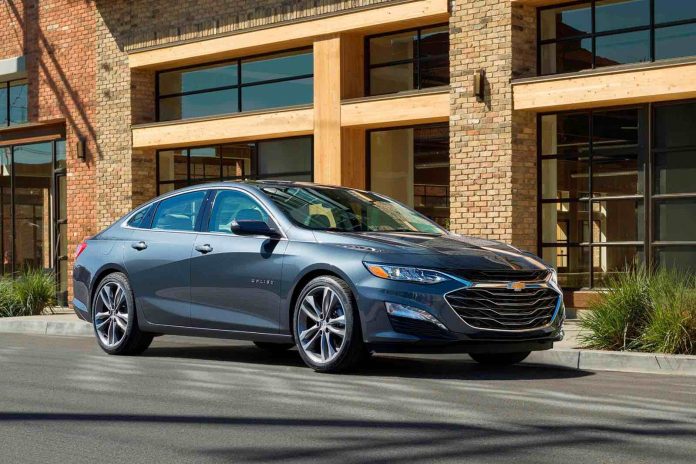



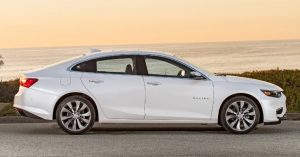








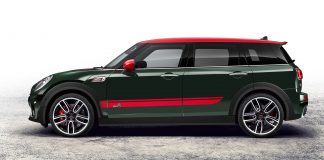
All I can say is, American carmakers are pushing me to foreign carmakers sedans…
Where was this GM CVT designed ? Built ? Sourced ?
i hope not another collaboration with Fiat like that POS they put in the ION Quad and VUE.
GM car…. CVT…. couldn’t even design a proper ignition switch after 100 years of making them without problems… I think not.
This is one thing I just dont get – how is it that an SUV which is heavier and higher up with much more metal and stuff to manufacture – costs almost the same as a sedan these days…its clearly a no brainer. And though personally I like sedans, given the benefits of an SUV with regards to more space, if I had one family car, it’d certainly be an SUV, especially if there is no price difference….
Speaking of small engines, I am currently renting a Trailblazer and it’s got a 1.2T CVT. Wow, a motorcycle engine. Decent little car, relative. I don’t care for the CVT, but chevy hides it’s noise and attributes pretty well and the car is decent, relative.
I can see how most of the masses won’t know or care about it, just get in and go, and it does that. I couldn’t find a way to turn off the ASS, and it’s annoying, but you can trick it with very light brake pressure.
Obviously, it’s passing speed is poor, but it goes 75-80 without much fanfare.
How long a little 1.2T will last is probably not good, but it appear to be a throwaway car approaching maybe 80-100K miles.
To be honest, I thought the Malibu was discontinued already……..
Hi Rich,
I’m betting it’s a goner. I doubt there will be a “new” version. This year (2022) is likely the last year.
Sad no cars anymore,pitiful a sea of suv’s and trucks!
The old cars never burned oil at 50,000 miles…
5 digit odometer and they had 150,000 then okay the valve seals were gone and oil burning on start up,but didnt hurt the engine..
Chrysler 318’s were somewhat known for bad valve seals at under 100,000 so okay maybe 50,000 some puffed smoke out just on some start ups but never had to add between oil changes.My brother owned a 1979 Dodge work van with a 318 with 70,000 and she puffed here/there,it ran until 300,000 miles in 1990 he bought a new van.
Even high powered Muscle Cars had 100,000 miles after 6 years..I was there,at 16 in 1977 I bought a 68 Chevelle SS with old lady owned like new and 140,000 miles,car looked new in/out..Always garaged,drivers seat had a tear and passenger side seam was coming apart.No rust as we lived in a area with little to no snow and never salt on the roads.
My Brother(dodge van guy) bought a 1971 Charger Super Bee with a 383 Magnum and it had 120,000 miles,lowest mile one he could find…he was searching and searching for one that wasn’t beat to death and was a 1 owner car..He found one B7 Blue beauty! We had tons of good races my Chevelle SS 396 and his Super Bee 383.Our cars both went nearly 200,000 before we did any major work,but we bagged on them not the car kept those mint but we raced them,engine/trans/diff had a workout,body interior were kept like new.
Hi Rex,
The best thing about those cars of the Before Time is that even when they did begin to use oil, it was easy – and inexpensive – to fix. I can still go through the 455 in my ’76 TA from the oil pan to the Quadrajet for about $1,500 in parts and machine work. Then it’s essentially a new engine, again. Most modern engines are not feasibly rebuildable, for a variety of reasons. Too complex, too expensive. Can’t bore a sleeved engine and it may not be economically realistic/worth doing to re-sleeve it. So you toss it. Assuming you can afford it.
Eric,
IIRC, back in the day, the Malibu was considered a MIDSIZED CAR! Chevy had bigger cars like the Biscayne, Impala, and the Caprice. That said, a Malibu would be considered a full sized car today…
Hi Mark,
Yup; the Malibu was an “intermediate” – by the standards of the ’70s. Bu today’s it’s a full-size car. I think one of the reasons today’s sedans are failing has to do with their being small – relatively speaking. Even the “full-size” one like the Benz S sedan I wrote about recently. It has a trunk not much larger than my ’76 Trans-Am’s… and my ’76 TA is a two-door sport coupe!
A 1964 Chevelle with a small block weighs the same as a 2021 Corolla.
Appliances. I know that’s an old metaphor, Ned not original with you, but it is rapidly becoming a curse. Through a convergence of multiple pressures, some of them market based but most of them artificially imposed, vehicles, like many other things, are becoming monolithic and bland. There’s little to distinguish between models in the various categories, as this Malibu demonstrates. Comparing them boils down to a game of inches, literally. There are very few differentiating factors here, one of them being powertrains, and once every car is forced into EV mode, that will evaporate. Soon we will exist in the automotive equivalent of office cubicles, each of us meted out our handler-approved amount of interior room, trunk space, horsepower, and fuel economy/electric range. Sure, we will have a choice between the small box, mid box, big box, provided we can demonstrate an approved need for the larger box sizes, and they might let us have a choice between black, gray, and white colors. This will, of course, be a precursor to mandatory public transportation and no personal car ownership, again the office cubicle analogy. This is assuming you simply cannot work remotely from home to eliminate the need for 90% of travel. Your groceries will be delivered, only those that are proven safe and effective for health and sold by approved corporatist vendors like Walmart and Amzon.
Ask almost any “car guy” what the most imminently practical, useful, and logical vehicle class is, and we’ll almost always tell you it’s a minivan, the literal box in wheels. Yet how many of us actually drive one regularly? Very few, aside from those who need that precise combination of practicality. So most end up compromising with a crossover, which has many of the benefits of a minivan but less stigma than a sedan, even as generation after generation crossovers become more minivan-like than ever. Slap a sliding door on most of them today, and you instantly get a minivan.
Customers desire safety, practicality, and fuel efficiency, yes. Add to this government fatwas on these and other topics like emissions and EV capability, things most consumers don’t care much about, and you get a grand convergence with no room for individuality. No wonder the automotive aftermarket is so huge in the US. In places like Germany, government regulations prohibit most aftermarket modifications that we take for granted here. What is the most easily and heavily aftermarket modified vehicle in the US? The Jeep Wrangler, by all accounts to a highly impractical and inefficient mode of transportation. Followed closely by pickups. Perhaps there’s still hope for America.
Those of us who love cars and driving are finding it ever harder to find something that inspires us to buy a new car. I have in my fleet as a daily driver a Lexus ES350. By any measure it is a great car. It rides more smoothly than an old Cadillac, has more interior room than one, too. It has 303hp and is reasonably quick and handles fairly well for its niche, far better than any luxobarge of the 1970s, gets 32mpg highway, and is super reliable. It’s not bad looking, either. But when I drive it, it’s like driving a microwave or eating dry white toast. It’s soul crushing, even if it will survive the apocalypse along with the cockroaches.
So this raises a question. What new vehicles, available for purchase now, supply chain shortages not withstanding, still stir up that automotive passion regardless of their impracticality? In other words, what do we need to buy now and hold on to for the next 20 years?
Here’s a few off the top of my head (I’m not intentionally focusing in American brands, but I’m starting there):
Jeep Wrangler (the V6 with a manual or the big 392 hemi version specifically)
RAM TRX
Dodge Hellcat of any form
Chevy Corvette Z06 (the just announced version)
Ford Bronco
Any heavy duty pickup, especially with a diesel engine
Ford Raptor
Kind of mad at you Eric for your jab about the 70s Malibus rusting out.
The first car I eve bought was 76 Malibu Classic (because that’s how I roll)
It had no rust, except for the rear fenders which someone filled in with bricks and I finished with Bondo. Other than that, zero rust.
I call on you to retract your venomous statement.
On this new one, only a 1.5L standard in a mid size. Blah
“It’s probably the last family car Chevy will ever make.”
And probably another reason GM is dead man walking, unless their ‘association’ with the Gov will garner them forced sales of EV’s because of regulation, which i’m betting is coming.
I used to rent a lot of cars and one of them I liked a lot was the first gen Cruze compared to all other compact rental cars. Was a great car, fun, relatively quick, etc…. Then I rented the 2nd gen Cruze and it sucked. If figured it out, the 1st gen had a 1.8NA 6sp, and the 2nd gen had a 1.4T 6sp. Then they went away…………..
I used to recommend the 1st gen Cruze to a lot of friends that asked.
a 1.4T CVT ???? OMG, shoot me now. No one’s going to buy a Premier except for the old lady that has money and has to buy a Chevy for loyalties sake. I’m guessing most people don’t care, maybe other than a test drive, and that tells me, for most to buy this over the competition, if they test drive them, ain’t gonna happen.
As usual for GM, they seem to only care about mpg, and they make and tune everything they make for such, and why I’m a ‘once all-GM owner’ for 20+ years no more.
Nice review Eric. Thanks